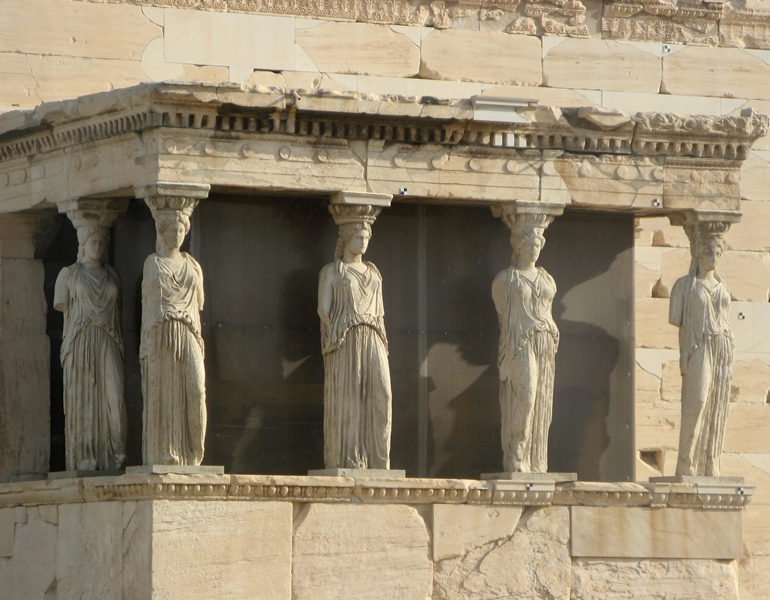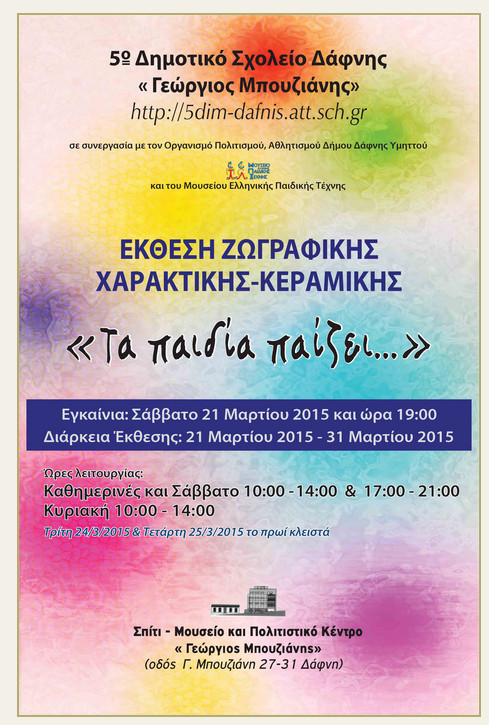

About the project
This project is for young students between eight to twelve years old. After the project completion we are going to present our feedback activities. Its aim is to help students meet different cultures, to make friends, to learn more about art and to realize how same and different people and countries are. Also to cultivate the students’ life skills and their aesthetic criterion.
Aims
This project may create to the students the interest for different cultures. Moreover the students will find the joy of art through important monuments and acquire knowledge of their history. At last they will meet new friends from other countries and share knowledge.
Work process
This project is expected to be completed in the curricula. We will be in touch at least once a month. Students will find information, read, draw, play and write about a monument of their country. We are going to use different ICT tools , also. The methodology will be students-centered and group cooperative learning.
Expected results
Students will show their works to their schools so as to provide the love in art to the other students also. The exhibitions will be open to public.
We are going to use twin space platform and different ICT tools.
Feedback activities will help students to fulfill their knowledge.
Pedagogical Innovation and Creativity
The most important factor is the embedding of Fine Arts lesson in the Primary education, in the curricula.
The students have engaged in active learning throughout the project. We use group work cooperative learning system, ICT materials, project method and learning to learn. Presentations and experiential workshops, as seen in our Fine Arts practice are included.
Main goals for the participating members to be succeeded:
• Help children acquire knowledge about History, Geography, and Art Culture as a source of life and civilization and to love foreign languages.
• Increase the children’s interest and appreciation about Visual- Fine Arts, and Architecture, through the History of Art teaching.
• Cultivate the Aesthetic criterion and the aesthetic values of the pupils as well and also their observation and inspiration.
• Increase the interpersonal and intrapersonal children’s relations.
• Offer ways of creative expression through Visual – Fine Arts.
• Help all members become able to communicate and make new friends.
• Learn more about art and other cultures, to realize that people and countries have both similarities and differences.
• Cultivate life skills through experiential learning and collaboration.
• Make use of Interaction on the educational practices. A highlighted point is the knowledge exchanging, in the educational community and the results sharing in public.
• Make the children understand and feel that they can share and exchange knowledge as they are part of a creative School society.
• Improve the children’s’ Emotional Intelligence.
• Promote the positive approach and the correct use of technology, computer programs and internet.
Use of Technology Contact among school partners
We are going to have many times in the week contact via internet with the Teachers partners for preparing, planning and evaluating the project steps. The students will share materials at least once a month. The use of different ICT tools such as: search engines, internet and different computer programs (painting – power point, word – PDF, audio-MP3, padlet, Google Earth and others) will help sharing and exchanging the materials among the students and teachers project members.
Other ICT tools that we are going to use for our best contact are: Blogs, uploads on the twin space platform and the use of forum & mail. Also, we are going to have skype contact. The teachers personal e-mails will be active and of course the classic post for sending- exchanging the works-creations and messages of collaboration among the children. Telephone contacts between the Art Teachers in Spanish language will be important and necessary for the fulfillment of the project.
Languages
We are going to use Greek, Spanish and English languages. All students and Teachers will have the opportunity to improve their English thanks to the project collaboration. Telephone contacts between the Art Teachers Theodora Chandrinou and Esperanza Caro in Spanish language will help to transmit the interest in foreign languages to the children.
******************************************************************************************
Evaluation -project results
As a result, after all the project activities and practices applied, we wish also to share our evaluation concerning the:
Curricular integration
In the project we applied the cross-curricular approach principles. Through Art the students explore the world of Greek and Spanish history. Students exchanged through twin space platform their works and they used ICT tools and classic mail post for a better communication.
• Prior to the activities, the whole class was formed in small working groups.
• The pupils exchanged materials and informations about the monuments, Greek and Spanish ones that were going to be presented.
• We used Power Point presentations and Internet exploring, also photos printed. After, they were talking about what impressed them the most.
• The children made research for additional information on the monuments presented and homework was advised.
• The project broadened pupils’ knowledge in history of art and on cultivating their Aesthetic skills.
• After searching the web for pictures and informations about various monuments, both in English, in Greek and Spanish languages, the students presented their works to the whole class and after to their partners through the twin space pages.
• Interaction and contact with the Spanish pupils was priority.
• After watching the exchanged presentations prepared by the Spanish and Greek students we talked about what impressed the pupils the most.
• They compared the foreign monuments attempting to find similarities and differences in the mentality of the two nations through Art in the centuries.
• Also we studied the geography and history from antiquity to modern times and we used among other tools Google Earth for that.
• Pupils from Greece and Spain were creative in all stages.
• They created sculptures, paintings and collage, group working and as individuals.
• All the participating Teachers assumed the role of the facilitator trying to inspire and motivate children, guiding and helping on the process from the beginning to the end.

Congratulations to all the pupils that participated in this project and worked hard! Special thanks to the project partners – founders Ioanna Bekri from Greece and Marta Espejo from Spain. Theodora Chandrinou and Esperanza Caro became the key partners of the project and all together we present the results.
Σας καλούμε να επισκεφτείτε τις σελίδες του προγράμματος στην πλατφόρμα twin space:
We invite you to visit the project twin space pages created
Συγχαρητήρια σε όλους!




























OUR ETWINNING PROJECT: PORTRAITS AND EMOTIONS
LABELS FOR OUR PROJECT
Blog for our Greek presentations
Colegio “San José”- Nuestras clases
Blog Madrid: www.ncreativos.blogspot.com.es
Vídeos interesantes: Retrato y emociones
Amistad Grecia -España
Pupils of 13th Pr. School of Ilion, Athens
Graffiti del Colegio San José
5th Primary School of Dafnis – Georgios Bouzianis – Athens Greece – Scholl page
Zentagle/Divina Pastora
RETRATOS Y EMOCIONES/DIVINA PASTORA
PORTRAITS AND EMOTIONS -13TH OF ILION –
GRAFFITI/DIVINA PASTORA
DÍA DE LA AMISTAD – GRECIA
Retratos y Emociones -Madrid
EMOTIONS IN FRESH SCULPTURES-GIUSEPPE ARCHIMBOLDO-13TH PRIMARY SCHOOL OF ILION-ATHENS
ARCHIMBOLDO AND HEALTH EDUCATION-5TH PRIMARY SCHOOL OF DAFNIS
NO BULLYING IN GREECE
No a la violencia
Teacher’s day – Greece
“Día del Maestro”- Madrid
The Teachers inspire their students
1st day of May
FLOWERS FOR THE 1ST DAY OF MAY
MOTHER’S DAY-13TH PRIMARY SCHOOL OF ILION
Día de la Madre, Día del Padre -Madrid
interaction: Spain and Greece
10 YEARS OF ETWINNING
WISHES FROM GREECE!
VIDRIERAS – MIS SENTIMIENTOS – MY EMOTIONS
ROSTROS INTERIORES/DIVINA PASTORA
INNER FACES
PRINTMAKING
Documentos Retrato y emociones-Madrid
PORTRAITS OF ANCIENT GREEK GODS
PORTRAITS ON ANCIENT GREEK COINS
DESEOS – WISHES FROM ATHENS , GREECE.
SWEET WISHES FROM GREECE TO SPAIN
INTERNATIONAL EXHIBITIONS – COLLABORATIONS – RESULTS PRESENTATIONS
Exposición del trabajo
INTERNATIONAL PRESENTATION- 5TH OF DAFNIS & 13TH OF ILION, ATHENS-GREECE
Active and creative students – We are all citizens of our world
PRESENTATION OF GOOD PRACTICIES IN PRIMARY EDUCATION- ETWINNING PROJECTS
Main goal succeeded
In our project we used Art Education as a vehicle and we placed our common targets. The main goals succeeded were :
• Through project work to improve the coexistence among students and the development of competences (cultural, artistic, personal and autonomous).
• That we taught children that they are active members of the global community.
• To help children develop their creative ability (Piaget, 1962) .
• To improve the aesthetic criterion, Visual Art perception and critical observation through the direct contact with experiential learning and by using different tools and techniques.
• To discover new ways of communication and social interaction between peers and within the school community as a whole.
• To increase imagination and to inspire our pupils.
• To develop the Emotional Intelligence and empathy of the participants.
• To increase collaboration and the harmonious integration of the participants in the teams as a result of their self-confidence and self-esteem.
• To increase eagerness for collaboration and especially for the students with learning difficulties to become well accepted by their schoolmates in the teams.
• The motivation and attendance of all students in the creative activities.
• The progress of pupils with training difficulties and low self-esteem, in all aspects. ( Naumburg. M. 1947) .
• To diffuse the teachers’ appreciation for the cognitive object on which they specialize.
• The acquaintance with the culture of the other countries, through meetings, and by exchanging presentations about concrete themes.
• The development of cultural consciousness.
• The development of a deep understanding concerning the relation of the Arts in different Cultures and Societies.
• To develop critical thinking and support new ideas on solving dilemmas.
• To make clear that the benefits of Art in shaping our personality (Heline, Corinne, 1972).
• To promote the positive approach and the correct use of technology, computer programs and the Internet
Use of thechnology
The pupils used a variety of search engines to look up information on several themes, e-material such as pictures and texts from Wikipedia and numerous sites were used extensively. For the presentation of the informations and their creations we used: PowerPoint, padlet, slide share and thinglink technology.
Tools used:
• Audio conference
• MP3
• Other software (Powerpoint,video,pictures and drawings)
• Project Diary
• Twinspace
• Video conference
• Web publishing
• e-mail
We had telephone contacts, as well.
*****************************************
We used the project as an educational tool for our future eTwinning projects: